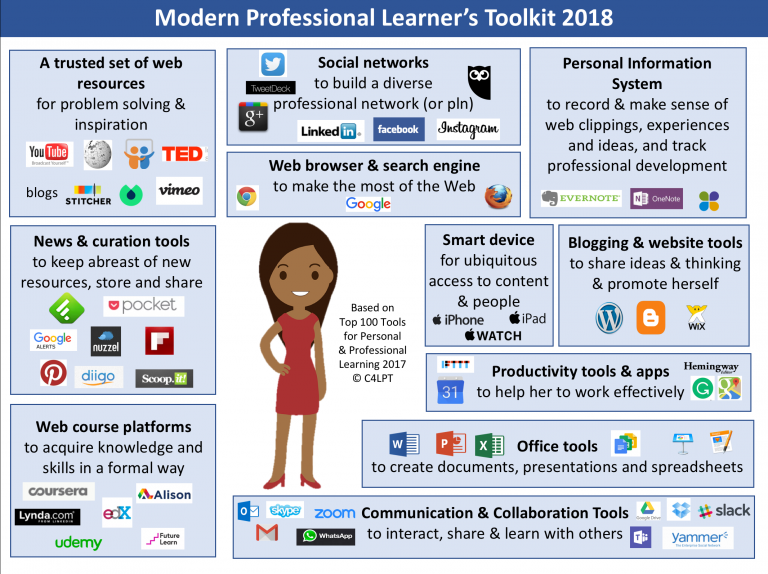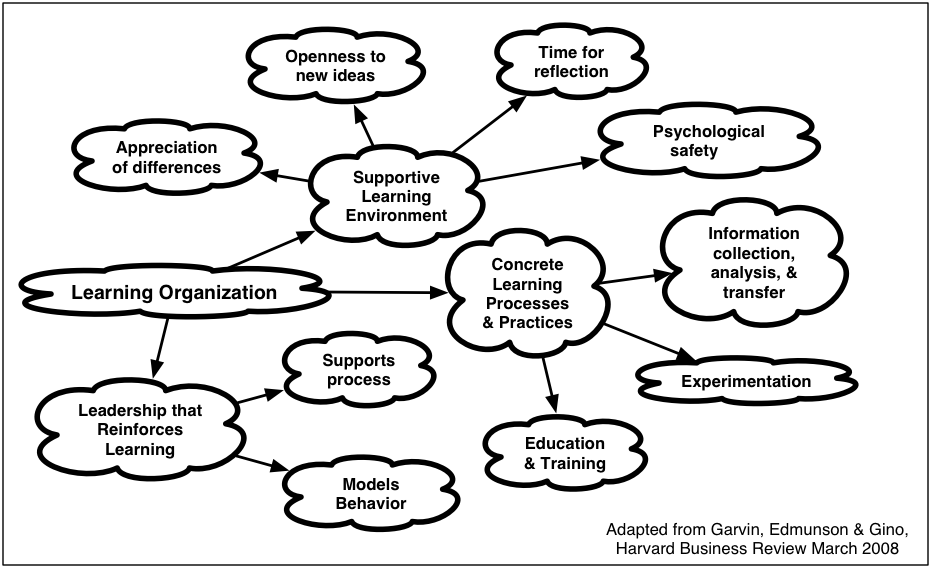My colleague, Harold Jarche, recently posted about his professional learning toolkit, reflecting our colleague Jane Hart’s post about a Modern Learner’s Toolkit. It’s a different cut through the top 10 tools. So I thought I’d share mine, and my reflections.
Favorite browser and search engine: I use Safari and Google, by default. Of course, I keep Chrome and Firefox around for when something doesn’t work (e.g. Qualtrics). I would prefer another search engine, probably DuckDuckGo, but I’m not facile with it, for instance finding images.
A set of trusted web resources: That’d be Wikipedia, pretty much. And online magazines, such as eLearnMag and Learning Solutions, and ones for my personal interests. I use Pixabay many times to find images.
A number of news and curation tools: I use Google News and the ABC (Oz, not US) in my browser, and the BBC and News apps on my iDevices. I also use Feedblitz to bring blogposts into my email. I keep my own bookmarks using my browser.
Favorite web course platforms: I haven’t really taken online courses. I’ve used Zoom to share.
A range of social networks: I use LinkedIn professionally, as well as Slack. And Twitter, of course. I stay in touch with my ITA colleagues via Skype. Facebook is largely personal.
A personal information system: I use both Notability and Notes to take notes. Notes more for personal stuff, Notability for work-related. I use Omnigraffle for diagrams and mindmaps. And OmniOutliner also helps when I want to think hierarchically.
A blogging or website tool: I use WordPress for Learnlets (i.e. here), and I use Rapidweaver for my sites: Quinnovation and my book sites.
A variety of productivity apps and tools: Calendar is crucial, and Pagico keeps me on track for projects. I use Google Maps for navigation. I use SplashID for passwords and other private data. I often read and markup documents on my iPad with GoodReader. CloudClip lets me share a multi-item clipboard across my devices. Reflection: this overlaps with the personal information system.
A preferred office suite: I don’t have a preferred suite, though I’d like to use the Apple Suite. I use Word to write (Pages hasn’t had industrial-strength outlining), Keynote to create presentations (e.g. one from each suite). I don’t create sheets often.
A range of communication and collaboration tools: I use Google Drive to collaborate on representations. I have used Dropbox to share documents as well. And of course Mail for email. Reflection: this overlaps with social networks.
1 or more smart devices: I’d be lost without my iPhone and iPad (neither of which is the latest model). I use the phone for ‘in the moment’ things, the iPad for when I have longer time frames.
So, that’s my toolkit, what’s yours?


